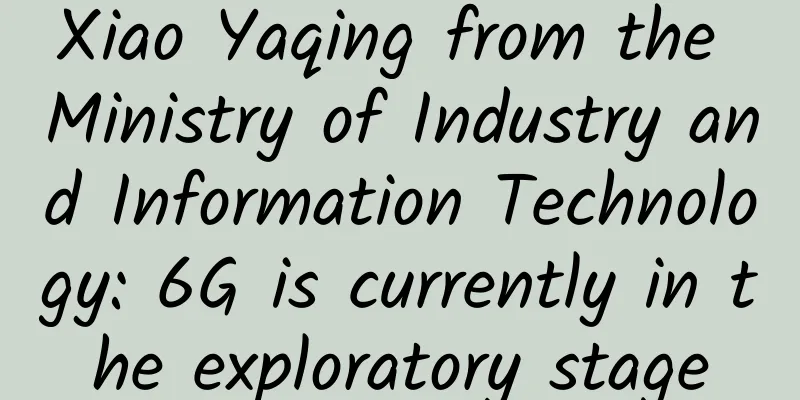5G deployment makes IoT a convenient part of life

|
A major shift is happening with IoT devices that have begun to fill homes, offices and industrial sites. How will 5G deployment be the force that enables these devices to communicate and work together seamlessly, paving the way for truly smart homes and smart cities? More and more smart devices are taking hold in homes and offices, but communication between them is still not seamless. Many of these devices use different wireless protocols, have different bandwidth and power requirements, and don’t work together effectively. However, with the advent of 5G, this may soon change. The rollout of 5GMajor telecom operators in many countries are shutting down 3G cellular networks and turning on 5G networks. It's not an overnight shift, but it's moving forward. By the end of the year, 5G networks provided by one or more major operators will cover more than half of the country. These networks will play a key role in expanding the IoT ecosystem because of their ability to store large amounts of data. With lower latency, higher bandwidth and a network capacity of 10 megabits per second per square kilometer, 5G is ideally suited to power the growing number of smart devices. As smart cameras, cars, connected refrigerators, and more become more common, IoT devices require faster, higher-capacity networks to keep up with the demands of connectivity. Third-generation networks aren't up to the task, but 5G networks are. 5G offers 1,000 times the range of fourth-generation cellphone networks, and it also provides lower latency for faster, smoother, and more reliable connections. Devices of nearly every kind are getting smarter. But they can’t reach their full potential without a high-capacity, lightning-fast network to run them on, and the networks these devices need are now becoming a reality. Devices are getting smarterManufacturers have been putting chips in home appliances, cars, security cameras and a range of other devices for years. Now, many of them are making faster 5G-connected devices. According to data, the global 5G Internet of Things market size was valued at approximately US$1.4 billion in 2020 and is expected to grow at a compound annual growth rate of 72.1%, reaching a total market size of US$111.2 billion by 2028. Smart, connected devices rely on high-speed processing made possible by cloud computing, which is exactly what cloud computing enables. But where this process happens is changing. The rollout of 5G will enable more edge computing, where data processing happens at the source of distributed systems rather than on the actual device. This will be a game changer for the Internet of Things because it will open up entirely new possibilities. Network and DevicesWhen faster, more reliable cellular networks are combined with future-optimized devices, homes, workplaces, and even cities will become smarter. These machines will not only communicate with the cloud, but also with each other. Take autonomous driving, for example. Today, some cars can drive themselves, but every bit of computing power that makes it possible is located in the actual vehicle, which means there are certain limitations. But what if streetlights and other objects on the road could provide some of the required computing power? Edge computing could change the design of cars while making autonomous driving safer. Countless other examples will become a reality in healthcare settings, office buildings, city blocks, industrial sites, and other locations. Thanks to massive bandwidth, there is virtually no limit to what we can accomplish when machines can communicate with each other. SummarizeOf course, the deployment of 5G means facing some new challenges. Anyone moving toward distributed data processing and smart devices should be concerned about security. Companies that design digital infrastructure for today's data processing will have to completely rethink how to collect, protect and share information. Yet the rollout of 5G is cause for celebration, and not just because it will provide better WiFi on flights, faster movie downloads, or better cell phone coverage in remote areas. When the new networks and devices emerge together, it will pave the way for a fascinating and exciting future. |
>>: It’s time to issue 5G private network frequency licenses
Recommend
Simplifying the Complexity: A Detailed Explanation of Computer Network Layers
Today we will talk about why computer networks ar...
80VPS: Hong Kong/Korea/Japan VPS annual payment starts from 299 yuan, US cluster server 8*/27 total 232IP monthly payment starts from 750 yuan
80VPS has launched a mid-year promotion, offering...
In the 5G era, closed systems are also dangerous. There is no chance to upgrade or patch.
As traditional industrial control systems and equ...
Learn Python network programming from scratch: Explore TCP protocol and example demonstrations!
Python is a high-level programming language with ...
TCP/IP protocol family architecture--network communication
Computers and network devices need to follow the ...
Let's talk about NAT protocol???
Hey everyone, this is cxuan. Today we are going t...
HostYun: Los Angeles CN2 GIA monthly payment starts at 15.3 yuan, Japan Tokyo VPS monthly payment starts at 27 yuan
The tribe has shared information about HostYun ma...
Summary and analysis of the top ten optical communication technologies in 2016
5G channel coding technology In October 2016, Hua...
How to set up a new router?
[[426343]] 1. Router startup initial sequence Whe...
Lenovo Nettop and GDS have reached a strategic cooperation to inject strong momentum into the development of the digital economy era
On May 25, 2021, Lenovo Lingtuo Technology Co., L...
Why can a TCP connection only have "3-way handshake" and not 2 or 4?
We know that the communication modes between clie...
2023 is already halfway through. What are the technological trends worth paying attention to in the field of optical communications?
The entire industry was very enthusiastic about p...
Let’s talk about HTTP pipelining
HTTP pipelining is a technique for sending multip...
Sharktech: High-security VPS with 10% off monthly payment and 50% off annual payment, $47.7/year - 2GB/40GB/4TB/Los Angeles and other data centers
Sharktech (also known as Shark Data Center, SK, e...
uSens Linggan Wang Xiaotao: This is the best time for the development of gesture interaction
[51CTO.com original article] On July 21-22, 2017,...








![[11.11]RAKsmart: US servers start from $30/month, Japan/Korea servers start from $59/month, cluster servers start from $109/month](/upload/images/67cabd1fbfac6.webp)
